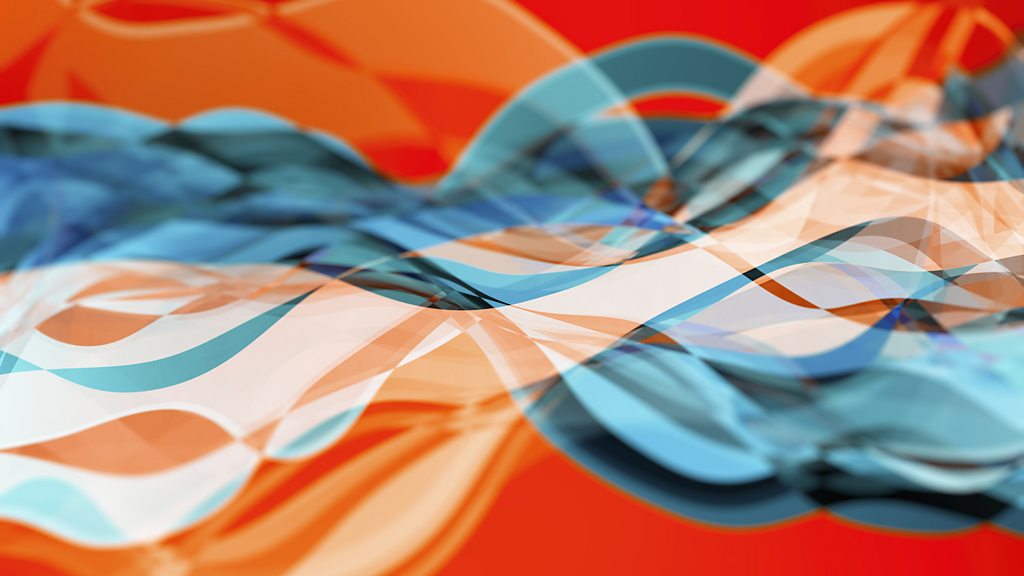I. Allegro moderato
II. Tema con variazioni
III. Intermezzo
IV. Finale
Ottorino Respighi was born in Bologna and later studied violin, piano and composition at the local conservatory (Licio Musicale de Bologna). His first working role was as principal violist for the Russian Imperial Orchestra in St. Petersburg where he met Rimsky-Korsakov. He later studied composition with him. Even after Respighi’s return to Bologna in 1902, when his compositions began receiving wider recognition, he continued to perform as a violinist and violist. In 1903 he also became the violist of the Mugellini Piano Quintet, with whom he performed until 1908. He returned to Italy in 1913 to become professor of composition at the Liceo Musicale di Santa Cecilia, Rome. During this period he married his pupil, singer Elsa Olivieri-Sangiacomo. In 1923, Respighi quit his professorship to dedicate himself to touring and composing, but continued to teach at his own pace until 1935. He performed and conducted in various capacities across the United States and South America from 1925 until his death. In late 1935, while composing his opera Lucrezia, Respighi became ill and was diagnosed with bacterial endocarditis. He died four months later, aged 56. His wife Elsa outlived him by almost 60 years, championing his works and legacy until her own death in 1996.
Although best known for his operas and orchestral works, Respighi wrote a number of string quartets.
The Quartet in D Major is sometimes referred to as his 3rd string quartet and was composed somewhere around 1904 (not 1907, as is often stated) and published in 1920. It was written at a time when Respighi was a member of the Mugellini Quartet in Bologna and was first performed in Bologna, in 1906, by his own quartet.
The work is is in four movements and the opening Allegro begins smilingly and in a romantic, Brahmsian vein. This harmonically lush romantic main theme is followed by a playful and syncopated second theme full of boisterous leaps and triplets which sounds typical of Respighi. The movement ends more ethereally with high harmonics over a yearning, rising cello solo.
The chromatic second movement, Tema con varizioni, has a melancholy operatic theme followed by a series of variations which are played by the different instruments in turn. The first of these is a little quicker, the second more mysterious and chromatic and the third features a cello melody over gossiping accompaniment. After a slow waltz with drones we hear a cello-led contrapuntal variation, a dance-like variation and finally a mournful final variation, with drones from the cello.
The 3rd movement, Intermezzo, is in all respects a scherzo. A tender introductory gesture launches Respighi’s lightly scampering scherzo, which he calls Intermezzo. Rising and falling themes reminiscent of Puccini’s "Crisantemi" and Italian opera, on violins, feature in the third section which transforms into a rondo-like passage where each instrument takes them up one at a time. After the passionate central section, he repeats the scherzo and adds a thoughtful coda.
The Allegro finale, begins dramatically, like a tarantella, with a lovely Italian melody set over quick chords. The second theme is more lyrical and restrained and both themes are recapped before Respighi builds in a nicely structured rhythmic and harmonic section. Gradually the music builds up over a drone and the last section has tight allegros with busy solo spots for violin and viola endings. Respighi finishes off his tarantella grandly with a dramatic flourish.
There are a handful of recordings and some handsome efforts to choose from in this very agreeable quartet, which is a real grower of a piece.
The Saint John Quartet are capable enough but they aren't the tightest ensemble you'll hear, even if they do play with enough elan to carry it off. However, the Quartetto d'Archi Venezia are better. They are more harmonious in all aspects and although they are a little too broad in the finale there's no doubting their committment to the work. Their recording is good and worthy of a recommendation.
The Nuovo Quartetto Italiano are more impressive than the Venetians in this fine work. The recorded sound has presence and there's some very nice phrasing in moments. This is an easier recommendation and a very decent traversal of this work. A little more consistency in approach and ensemble would have made this an even more attractive proposion.
Yet again the Brodsky Quartet seem to be in the driver's seat and offer some lovely textures to feast upon. Vanguard's sound is very easy on the ear and theres a pleasant warmth to both the sound and the Brodsky's fluid, quasi-symphonic realisation. Were it not for the quality of the remaining performance the Brodsky would be at the top of the pile but they are trumped this time by the Cremona Quartet's simply ravishing effort. This music is right up their street and it's reflected in an immense reading high on pashion, pathos and perfection. The ensemble's phrasing needs a special mention too and their handling of the 2nd movement is exemplary. Boy I wish they'd have recorded Respighi's Quartetto Dorico, too! Whatever, this gorgeously recorded summation needs to be in your collection. It's near perfect in many ways (including some beatifully poised lead violin playing) and all in all it's a hugely detailed accomplishment.
* BTW, there's a nice free BBC recording of the work from the Escher Quartet that you can listen to for free over on the BBC Sounds website. It was recorded in 2012 (link below)

 www.bbc.co.uk
www.bbc.co.uk

 www.talkclassical.com
www.talkclassical.com
II. Tema con variazioni
III. Intermezzo
IV. Finale
Ottorino Respighi was born in Bologna and later studied violin, piano and composition at the local conservatory (Licio Musicale de Bologna). His first working role was as principal violist for the Russian Imperial Orchestra in St. Petersburg where he met Rimsky-Korsakov. He later studied composition with him. Even after Respighi’s return to Bologna in 1902, when his compositions began receiving wider recognition, he continued to perform as a violinist and violist. In 1903 he also became the violist of the Mugellini Piano Quintet, with whom he performed until 1908. He returned to Italy in 1913 to become professor of composition at the Liceo Musicale di Santa Cecilia, Rome. During this period he married his pupil, singer Elsa Olivieri-Sangiacomo. In 1923, Respighi quit his professorship to dedicate himself to touring and composing, but continued to teach at his own pace until 1935. He performed and conducted in various capacities across the United States and South America from 1925 until his death. In late 1935, while composing his opera Lucrezia, Respighi became ill and was diagnosed with bacterial endocarditis. He died four months later, aged 56. His wife Elsa outlived him by almost 60 years, championing his works and legacy until her own death in 1996.
Although best known for his operas and orchestral works, Respighi wrote a number of string quartets.
The Quartet in D Major is sometimes referred to as his 3rd string quartet and was composed somewhere around 1904 (not 1907, as is often stated) and published in 1920. It was written at a time when Respighi was a member of the Mugellini Quartet in Bologna and was first performed in Bologna, in 1906, by his own quartet.
The work is is in four movements and the opening Allegro begins smilingly and in a romantic, Brahmsian vein. This harmonically lush romantic main theme is followed by a playful and syncopated second theme full of boisterous leaps and triplets which sounds typical of Respighi. The movement ends more ethereally with high harmonics over a yearning, rising cello solo.
The chromatic second movement, Tema con varizioni, has a melancholy operatic theme followed by a series of variations which are played by the different instruments in turn. The first of these is a little quicker, the second more mysterious and chromatic and the third features a cello melody over gossiping accompaniment. After a slow waltz with drones we hear a cello-led contrapuntal variation, a dance-like variation and finally a mournful final variation, with drones from the cello.
The 3rd movement, Intermezzo, is in all respects a scherzo. A tender introductory gesture launches Respighi’s lightly scampering scherzo, which he calls Intermezzo. Rising and falling themes reminiscent of Puccini’s "Crisantemi" and Italian opera, on violins, feature in the third section which transforms into a rondo-like passage where each instrument takes them up one at a time. After the passionate central section, he repeats the scherzo and adds a thoughtful coda.
The Allegro finale, begins dramatically, like a tarantella, with a lovely Italian melody set over quick chords. The second theme is more lyrical and restrained and both themes are recapped before Respighi builds in a nicely structured rhythmic and harmonic section. Gradually the music builds up over a drone and the last section has tight allegros with busy solo spots for violin and viola endings. Respighi finishes off his tarantella grandly with a dramatic flourish.
There are a handful of recordings and some handsome efforts to choose from in this very agreeable quartet, which is a real grower of a piece.
The Saint John Quartet are capable enough but they aren't the tightest ensemble you'll hear, even if they do play with enough elan to carry it off. However, the Quartetto d'Archi Venezia are better. They are more harmonious in all aspects and although they are a little too broad in the finale there's no doubting their committment to the work. Their recording is good and worthy of a recommendation.
The Nuovo Quartetto Italiano are more impressive than the Venetians in this fine work. The recorded sound has presence and there's some very nice phrasing in moments. This is an easier recommendation and a very decent traversal of this work. A little more consistency in approach and ensemble would have made this an even more attractive proposion.
Yet again the Brodsky Quartet seem to be in the driver's seat and offer some lovely textures to feast upon. Vanguard's sound is very easy on the ear and theres a pleasant warmth to both the sound and the Brodsky's fluid, quasi-symphonic realisation. Were it not for the quality of the remaining performance the Brodsky would be at the top of the pile but they are trumped this time by the Cremona Quartet's simply ravishing effort. This music is right up their street and it's reflected in an immense reading high on pashion, pathos and perfection. The ensemble's phrasing needs a special mention too and their handling of the 2nd movement is exemplary. Boy I wish they'd have recorded Respighi's Quartetto Dorico, too! Whatever, this gorgeously recorded summation needs to be in your collection. It's near perfect in many ways (including some beatifully poised lead violin playing) and all in all it's a hugely detailed accomplishment.
* BTW, there's a nice free BBC recording of the work from the Escher Quartet that you can listen to for free over on the BBC Sounds website. It was recorded in 2012 (link below)

Experience Classical - Quartet in D major - BBC Sounds
Composer: Ottorino Respighi. Performers: Escher String Quartet.

Merl's Blogged String Quartet and String Quintet...
As some of you are aware I started blogging my recommended string quartet recordings a while back as I didn't want to lose them in the Weekly String Quartet thread. However, blogging on TC has many limitations and there was no way to link all my posts in one place without the page disappearing...




